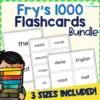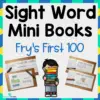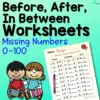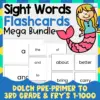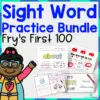Sequencing skills enable children to learn the logical order of a series or patterns. It teaches children to infer and develop critical thinking skills.
Here are ten no-prep sequencing worksheets that are time savers but are fun and engaging for children. Explore these varied sequencing activities perfect for different themes and target skills.
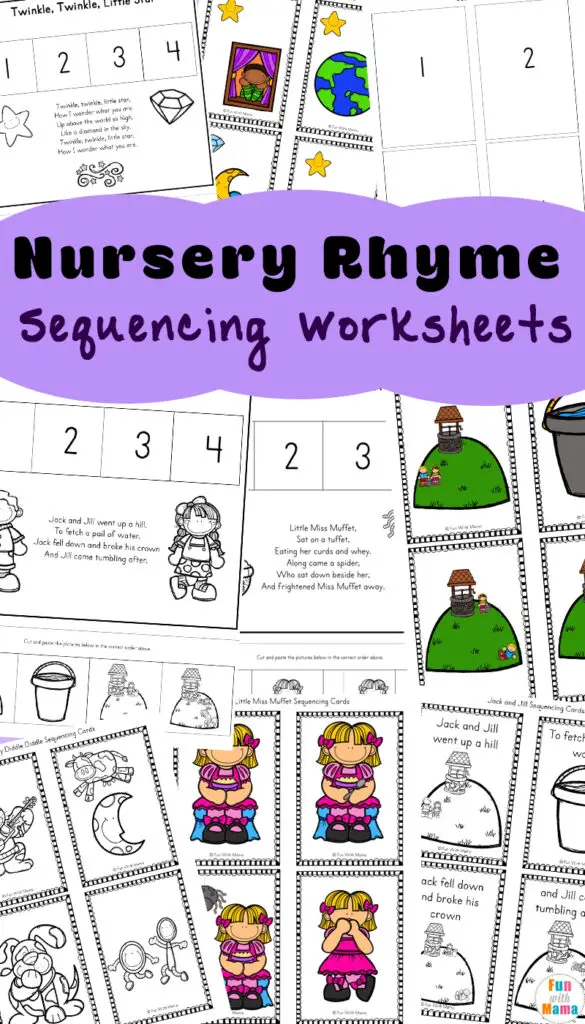
These worksheets focus on nursery rhymes that children are familiar with. Using pictures to arrange the rhymes in order allows children to understand that nursery rhymes are more than just children’s songs or chants.
These rhymes tell stories, and they are arranged in a logical order. Children will learn to think critically while learning the concepts of first, next, and last. Cutting, coloring, and pasting the pictures will help improve their fine motor skills.
Download and print these worksheets from the site. These come in black and white and colored pages. These worksheets feature ten familiar nursery rhymes, such as “Twinkle, Twinkle, Little Star,” and “Humpty Dumpty.”
Each rhyme is presented in two ways—a one-page activity with the written nursery rhyme and a two page with larger pictures.
Choose a worksheet that fits the child’s ability. Have the children color and cut the pictures. Let them arrange these in order and glue them on the corresponding boxes.
For this activity, you will need:
- Printed activity sheets
- Crayons or markers
- Glue
- Scissors
For more information on this activity, go to FunWithMama.com.
Related: Nursery Rhyme Crafts for Preschoolers
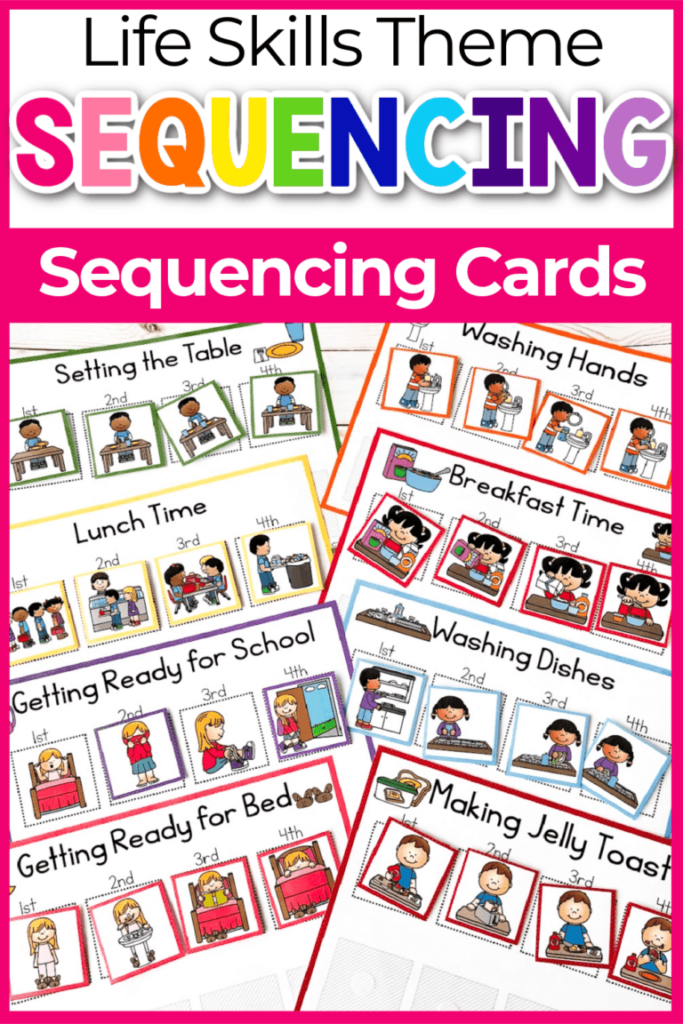
This type of sequencing activity teaches excellent life skills to young children. It teaches them organization by helping them understand daily routines. This activity is perfectly designed to introduce children to procedures and rules.
These are perfect for centers, tabletop activities, or discussions during circle time. Working with this activity will improve comprehension and remind children to follow a series of events by attaching the pictures in the correct order.
This set of activities can be downloaded and printed from the site. Cut the pictures and laminate these for durability. Attach velcro dots to the back of each picture and on the colored boxes on the activity mats.
Choose a topic for the children to work on, such as getting ready for school or bedtime. Lay the pictures and ask the children to place them in the boxes in order. Use questions as prompts like “What do you first/last?” or “What do you do next?”
For this activity, you will need:
- Printed activity sheets
- Scissors
- Velcro dots
For more information on this activity, go to LifeOverCs.com.
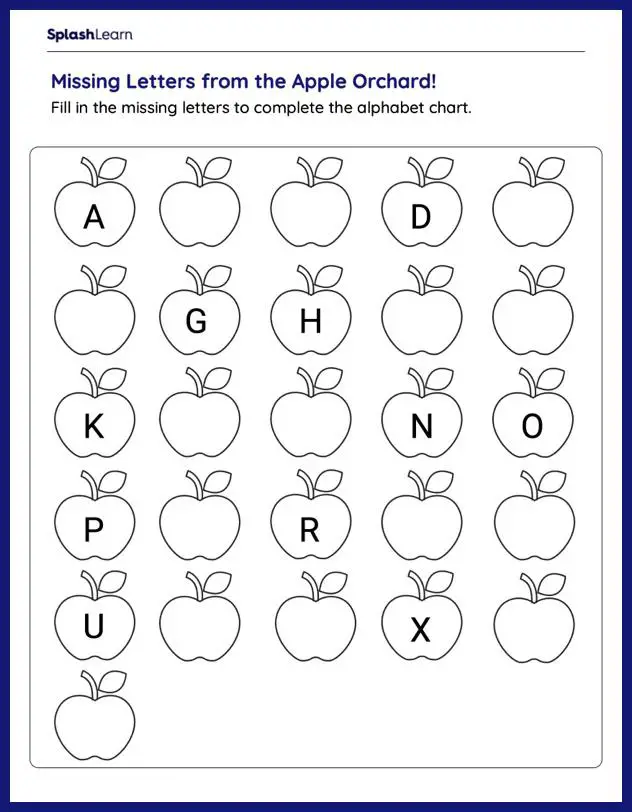
Letter sequence worksheets help children with letter recognition and are good practice for learning letter order. It also allows children to recognize letter forms, which is essential when learning to write the letters of the alphabet.
The worksheets come in uppercase and lowercase forms and are presented in various ways. Some pages require children to supply the missing letters on the list, while some are in a puzzle form that requires children to play.
Some worksheets come before or after a given letter. Some even have an illustration as a prompt for children to remember the letter. These activity sheets will help develop focus, patience, and visual discrimination skills.
Download and print the free worksheets from the site. Choose the activity that best fits the children’s abilities. Provide a pencil, crayon, or marker for them to write the letters of the alphabet or to color the letters to complete the puzzle.
For this activity, you will need:
- Printed letter sequence worksheets
- Pencil, crayons, or markers
For more information on this activity, go to SplashLearn.com.
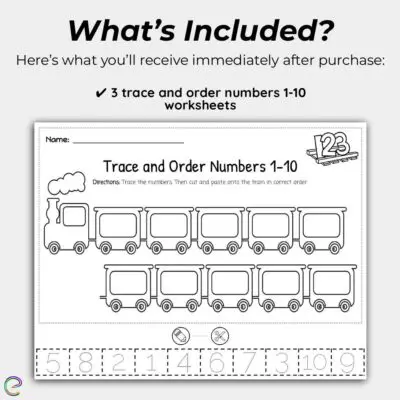
Number order is an important math concept to learn in preschool. With these worksheets, children will learn to recognize the numbers and arrange them in the correct order.
It also requires children to trace the dotted numbers, and cut and paste them, which will help enhance their fine motor skills.
These worksheets are a fantastic supplement for math lessons. These are perfect for centers and transportation-themed lessons.
Download and print the worksheets from the site. Explain the directions to the children. Have them trace the dotted numbers on the bottom part. Ask the children to name the number symbols.
Have them cut and arrange the numbers in order. Let them paste the numbers in the train cars from behind the engine to the last train car.
Extend this activity by allowing children to color the train, cutting the cars out, and gluing them together to make a long number strip.
For this activity, you will need:
- Printed number order worksheets
- Pencil or marker
For more information on this activity, go to EducationOutside.org.
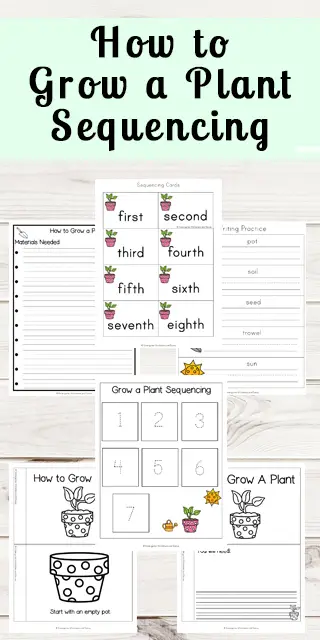
This set of sequencing worksheets on growing a plant is an excellent supplement for plant-themed lessons. These can be used with a gardening activity to help children understand the process of growing plants in pots.
They are differentiated to fit every child’s ability and come in black and white and color. Working on these worksheets will help improve children’s comprehension, fine motor skills, and critical thinking skills.
Download and print these free worksheets from the site. Choose a worksheet that is appropriate for the children’s abilities. Have them color, cut, and paste the pictures for the picture sequencing activity.
Children can color and put together the pages of the mini-book. It will make an excellent story to read to children before an actual planting activity.
Discuss the pictures to help them better understand the importance of each step. Ask children questions like “Why is it necessary to water the plants?”
For this activity, you will need:
- Printed planting worksheets
- Scissors
- Crayons or markers
- Stapler
For more information on this activity, go to KindergartenWorksheetsAndGames.com.
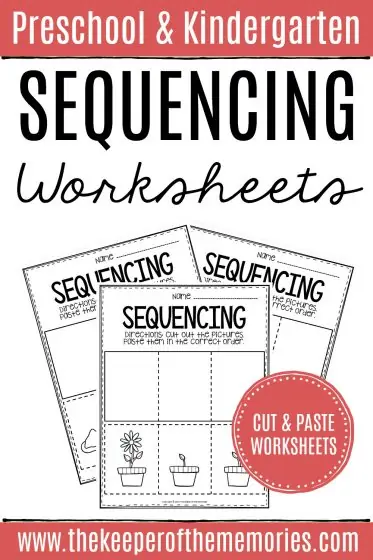
For young children, sequencing activities do not need to be complicated. This three-step sequencing activity is a great way to introduce children to arranging events in the correct order that will help develop comprehension and critical thinking skills.
Introduce this activity using the words “beginning, middle, and end” to help children build a connection with the activity. Using the words to tell the story based on the pictures will also help improve their oral language skills.
The coloring, cutting, and pasting tasks will help enhance children’s fine motor skills.
Download and print the worksheets from the site. Point to the pictures and ask the children what story they tell. Next, let the children color, cut out, arrange, and glue the pictures in order on the boxes.
Before pasting the pictures, explain to the children that each box represents the “beginning, middle, and end” of the events and should be arranged from left to right.
For this activity, you will need:
- Printed worksheets
- Scissors
- Glue
- Crayons or markers
For more information on this activity, go to TheKeeperOfMemories.com.
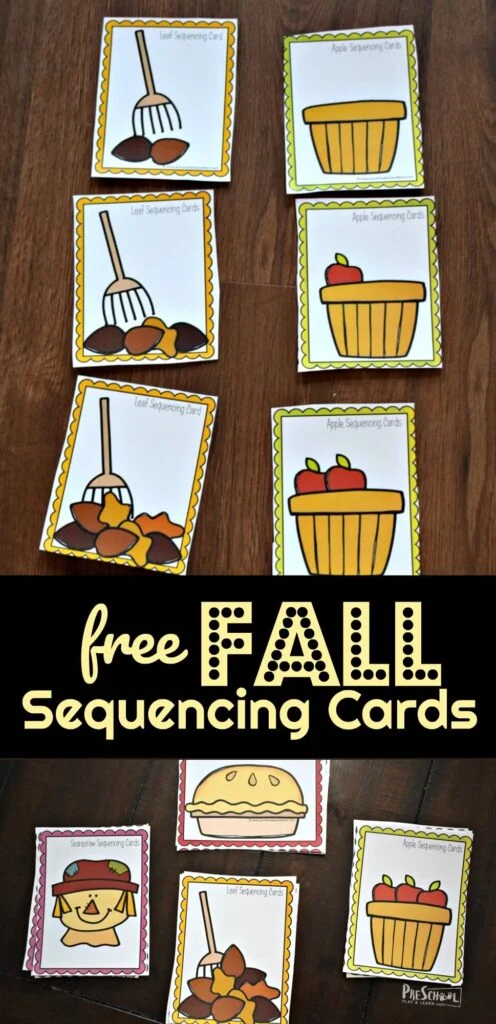
These sequencing cards are perfect for centers for the fall season. It comes in four different topics: baking an apple pie, making a scarecrow, raking leaves, and harvesting apples.
This fun activity allows children to arrange the cards in order and can be turned into a game. It teaches children to understand the progression of events, count objects, and recognize patterns.
Download, print, and cut the free sequencing cards from the site. These colored cards can be laminated for durability. Each topic has four cards to arrange in order.
Have the children place all four cards face-side up. Let them find the card that happened first, second, third, and last. Ask them to line them up from left to right.
Modify this activity by having the children play it like a memory game. Place the cards face-side down and have the children take turns flipping the cards before arranging them in order.
For this activity, you will need:
- Printed sequencing cards
- Scissors
For more information on this activity, go to PreschoolPlayAndLearn.com.
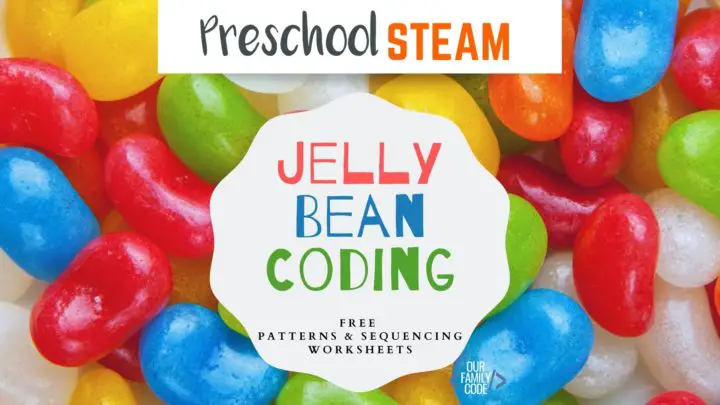
The colorful jellybeans are the star of this STEM activity sheet that teaches sequencing. Color recognition, matching, and simple patterns, such as ABC, ABAB, AAB, and ABB, can be learned with this activity.
This activity that explores different sequences is an excellent introduction to coding. As children recognize the patterns, they will also understand that patterns can be arranged in different and predictable ways.
The three worksheets in this set are perfect for Easter. Children will understand the logical arrangement of colors with this activity through the visible patterns.
Download and print the free activity sheets from the site. Have the children use real jelly beans to match the colors of the illustrations. Place these on the lines.
The site suggests using alternatives if jellybeans are unavailable. Use bingo dot markers, colored markers, or even stickers. Laminate the activity sheets or place them in dry-erase pocket sleeves so they can be reused many times.
For this activity, you will need:
- Printed sequence coding worksheets
- Bingo dot markers
- Jelly beans
For more information on this activity, go to OurFamilyCode.com.
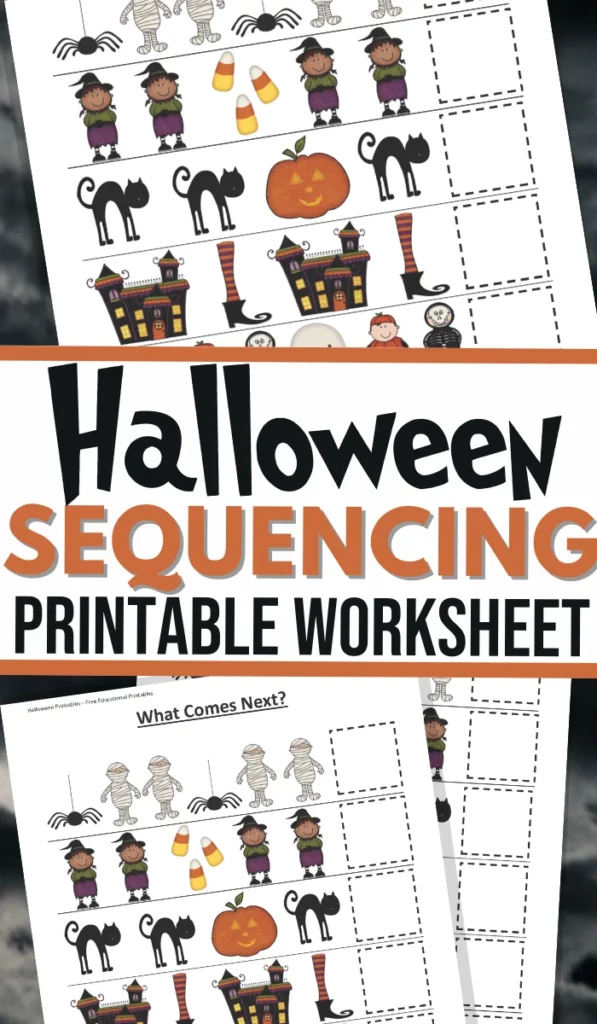
The adorable illustrations make this worksheet perfect for Halloween. Children will learn patterns by understanding the order between the pictures. This activity will help improve children’s critical thinking and fine motor skills.
These are great for centers, busy bags, and task boxes. Modify this activity by hiding the picture cutouts in a Halloween-themed sensory bin for children to find to make it more challenging and provide a great sensory experience for children.
The free sequencing worksheet can be downloaded from the site. Print and provide each child a copy. Explain to the children that they need to find the next picture.
Point to each picture and say its name, then ask the children what they think is next. Let them choose from the five pictures on the bottom part of the worksheet.
Have them cut and paste it into the corresponding box. Let them repeat the step until all numbers have been answered.
For this activity, you will need:
- Printed Halloween worksheet
- Scissors
- Glue
For more information on this activity, go to 3BoysAndADog.com.
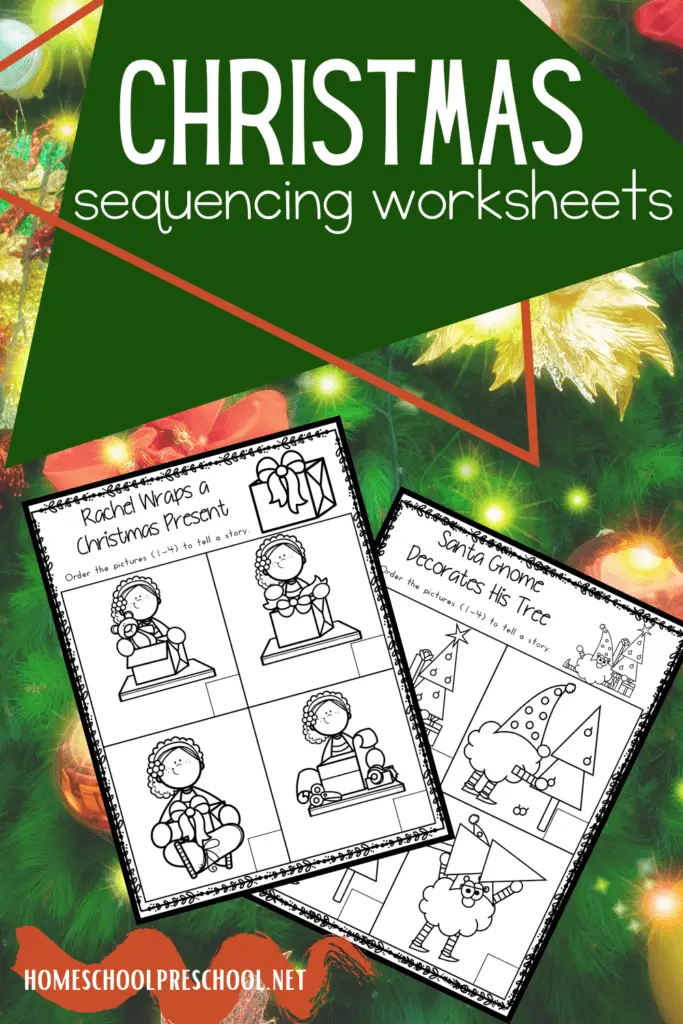
These worksheets are a great addition to any Christmas-themed lesson and for centers. Children will learn to arrange the pictures that tell a story in order. The pictures on these worksheets are based on activities children can relate to.
Extend the activity by asking the children to color the pictures to help them develop their fine motor skills and creativity.
The link to this free printable can be found on the site. Download and print these. Tell the children that the four pictures tell a story. Ask the children which of the four happened first, second, third, and last.
Have them write the number in each box on the bottom right of the pictures. Modify this activity by having them turn it into a book after answering.
Ask them to cut the pictures and staple them together. Let them tell the story with it to help develop their oral language skills.
For this activity, you will need:
- Printed Christmas sequencing worksheet
- Pencil or marker
For more information on this activity, go to HomeschoolPreschool.net.
Conclusion
Children need to learn sequencing early to help them understand the world better. Knowing that events happen because of a process will help reinforce comprehension and problem-solving skills.
Consider these no-prep worksheets that build essential skills in preschoolers. Thank you for reading. Come back and check out our other worksheet articles soon.



